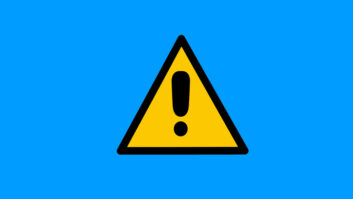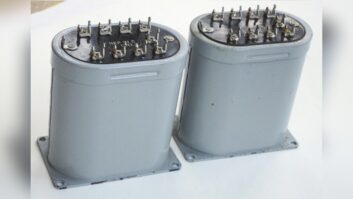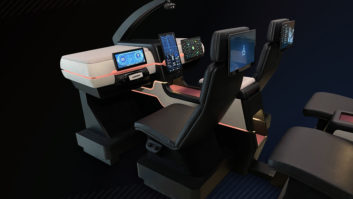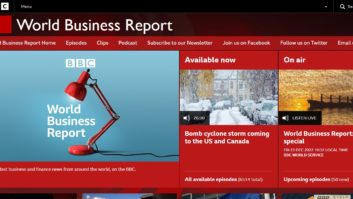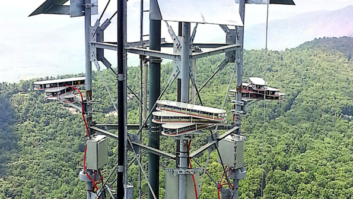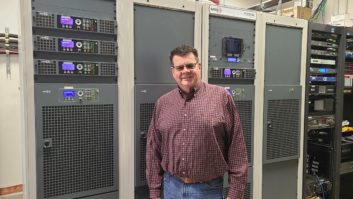A few years ago I was tasked with finding out what was wrong with our night coverage on 1420 WLNA(AM).
It seems that listeners as close as 2 miles from the transmitter site were having problems receiving the station. The station is a DA-2, 5 kW day, 1 kW night. It was constructed in the early 1980s and was (is) in relatively good shape.
After checking all of the antenna parameters, I did a set of monitor points and partially ran two of the radials from the last proof. What I determined was that the station antenna array and transmitter was operating substantially as it was licensed back in 1980.
A quick drive around about 2–3 hours after sunset showed that at night, our interference-free coverage area was anywhere from 2–4 miles from the transmitter, depending on conditions, confirming what our listeners were complaining about.

The author created a savings calculator to give a general idea of a station’s potential savings by turning off its transmitter between midnight and 6 a.m. Find it at www.signitoff.org under Savings Calculator. A brief search of the FCC database revealed that there were no fewer than 65 stations licensed to operate at night on 1420 kHz in the United States alone.
Add to that 26 more stations from Canada and Mexico and the frequency is chaos. I began to wonder what the point was of even being on the air.
Is anyone out there actually listening to Fox Sports Radio at 2 a.m. with multiple carriers beating in? How many stations do we really need to have repeating Larry King, Jim Bohannon or any of the other overnight AM programming?
Wasted Electricity
A little research of the FCC rules — Part 73.1740(a)(1) — shows that commercial radio stations need to adhere to the following minimum operating schedules:
Between the hours of 6 a.m. to 6 p.m. local time, stations must be in operation two-thirds of the total hours they are authorized to operate;
Between the hours of 6 p.m. to midnight, stations must be in operation two-thirds of the total hours they are authorized to operate
Note that there are no requirements to operate between midnight and 6 a.m.
How much electricity (and therefore money) is being wasted keeping these stations on the air 24/7?
For my own station, that calculation is pretty simple: I estimate that the BE AM6A transmitter uses about 2,200 watts while transmitting at 1 kW nighttime power. Add to that the air conditioning load in the summer, and it likely averages 2,600 watts.
If the station were signed off from midnight to 6 a.m., that would add up to 15.6 kWh per day or 5,694 kWh per year. In Westchester County, the going rate for electric is $0.18 per kWh. Yearly, that adds up to $1,024.92. Electric rates are projected to increase by 3–4 percent per year, which will make that figure even higher in the coming years.
This does not figure in the summer months, when the station operates for 1–1.5 hours at full daytime power before 6 a.m.
In accordance with 73.1740(a)(1), we could sign off at 11 p.m. or even 10 p.m. and still meet all of the minimum operating requirements and further reduce our power bill.
There are a total of 4,778 licensed AM radio stations in the United States. Seventy-seven of them are Class A stations (formerly known as “clear channel” stations, not to be confused with Clear Channel Communications). Even most of the big Class A stations are carrying some form of syndicated network talk on the overnight. How many AM stations are making money selling advertising on this? How many are breaking even?
Some stations operate at higher powers overnight, some operate at lower powers. It would be difficult to pinpoint the electrical savings if, for example, half of the AM radio stations choose to start signing off from midnight to 6 a.m. However, for this example, if WLNA represents an average AM station, this would result in the savings of about 13,603,000 kWh of electricity per year. That is not nothing.
As far as environmental impact: The EPA estimates that each kWh of electricity generates 1.72 pounds of CO2, 0.00412 pounds of SO2 and 0.00348 pounds of NOx, according to a 2002 U.S. Department of Energy publication, “Updated State-level Greenhouse Gas Emission Coefficients for Electricity Generation.”
Therefore a savings of 13,603,000 kWh represents a reduction of 11,699 tons of CO2, 56,044 pounds of SO2 and 47,338 pounds of NOx per year. That is not nothing either. SO2 and NOx are primarily responsible for acid rain and destruction of great swaths of forest on the East Coast of the U.S. that are down wind of the mid-west coal-fired power plants.
It is time that we broadcasters started cleaning up our act, stop wasting energy and start saving a little money in this time of tight budgets. Besides, it might make the AM band almost listenable again overnight.
The author is director of engineering for Pamal Broadcasting Ltd. in Albany, N.Y.





